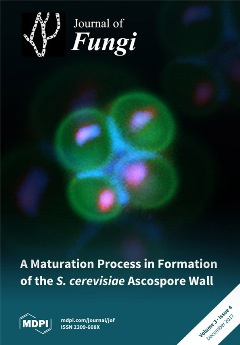Oropharyngeal candidiasis, a common fungal infection in people living with HIV/AIDS (PLWHA), arises from
Candida species colonizing the oral cavity. Fluconazole is the preferred treatment and is often used empirically. Few studies have investigated the prevalence of fluconazole resistance in Nigeria. This study
[...] Read more.
Oropharyngeal candidiasis, a common fungal infection in people living with HIV/AIDS (PLWHA), arises from
Candida species colonizing the oral cavity. Fluconazole is the preferred treatment and is often used empirically. Few studies have investigated the prevalence of fluconazole resistance in Nigeria. This study aimed at determining the burden of fluconazole resistance among
Candida species in the oral cavities of PLWHA. We sampled the oral cavities of 350 HIV-infected adults and an equal number of HIV-negative controls.
Candida isolates were identified using germ tube tests, CHROMagar
Candida (CHROMagar, Paris, France), and API
Candida yeast identification system (BioMérieux, Marcy-l’Étoile, France). Fluconazole susceptibility was determined using the Clinical and Laboratory Standards Institute disc diffusion method. Data were analysed using SPSS version 21 (IBM, New York, NY, USA). The significance level was set at
p ≤ 0.05. The isolation rates for
Candida amongst HIV-infected subjects and controls were 20.6% and 3.4%, respectively (
p < 0.001). In PLWHA,
Candida albicans was most frequently isolated (81.3%) and fluconazole resistance was present in 18 (24%) of the 75
Candida isolates. Resistance to fluconazole was present in half of the non-
albicans Candida isolates. Fluconazole resistance is prevalent among oral
Candida isolates in PLWHA in the study area with a significantly higher rate among non-
albicans Candida spp.
Full article






